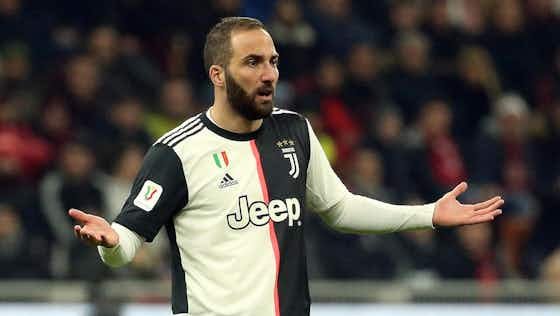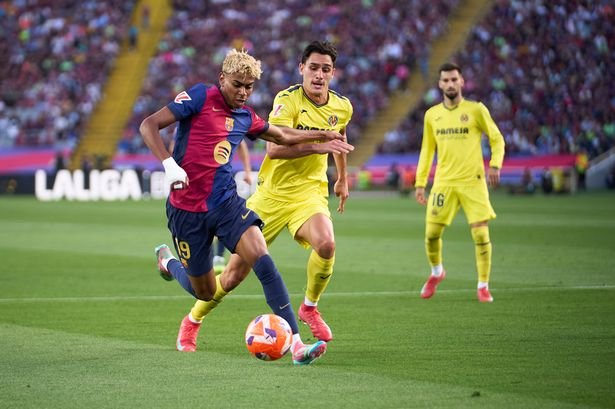You should have had a release clause, Alexander! Imagine the strife and anger that could have been avoided had Isak’s agent insisted on inserting a figure of, say, £120million into the six-year contract his client signed when joining Newcastle United in August 2022.
Then again — and please do not take this to be actual reality — maybe he does have a release clause and it’s completely confidential? Or perhaps he had a release clause that has expired? Maybe he’s got one that just hasn’t come into force yet? Or perhaps it is only applicable during a full moon, or while EastEnders is on?
Release clauses used to be a novelty in football, but they’ve become increasingly common, and many of this summer’s big transfers have involved players who have got or had one.
And as well as being prevalent, they’re also becoming more complex.
For a start, a release clause is technically slightly different to a buyout clause, which are very common in Spain, to the extent they seem to be all but mandatory.
Why? Well, the subject is explained in more detail here but, essentially, Spanish employment law dictates that each worker/player has the right to buy out and break their existing contract and go to a new employer/club.
The figure required to do so, however, is often fixed at a level far beyond what the player might actually be worth in the transfer market. For example, there are several big names in La Liga whose buyout clauses are set at €1billion or higher, such as Lamine Yamal or Jude Bellingham. Even if the buying club meets this figure, the player technically has to pay it themselves — in one lump sum.

Yamal has a release clause of €1billion at Barcelona (Eric Alonso/Getty Images)
Not to say that seemingly insurmountable figures aren’t reached, like when Paris Saint-Germain met Neymar’s £200million clause in 2017, with the Brazilian forward’s lawyers paying the sum in person to Barcelona (having been wired the money by PSG first, you would imagine, given that’s a pretty substantial IOU).
Release clauses, which are now common elsewhere around Europe, are different in that it is language written into the player’s contract. This means when that set fee is triggered by an interested club, it grants the player permission to speak to them and potentially agree a deal.
It certainly doesn’t mean — unlike a buyout clause, which is technically the player committing to leaving – that the player will then move to the prospective buying club. It simply forces the team he’s contracted to at the time to accept that offer.
Chelsea would probably have been pretty confident of signing Michael Olise from Crystal Palace in 2023 when they triggered a £35million release clause; however, Olise decided against moving to Stamford Bridge. He then signed a new four-year contract with Palace, which is believed to have included a higher release clause of around £60m. Bayern Munich duly triggered this a year later, and off the Frenchman went to Germany.
The devil is often in the contractual details. Just ask Arsenal’s then Arsene Wenger, who wrongly assumed they would be able to sign Luis Suarez from Liverpool in 2013 when they offered £40million plus £1, believing they had met the terms of his release clause by bidding more than £40m. It was a hell of a summer transfer saga, which The Athletic revisited a few years ago.
The move never happened, and there remains ambiguity to this day as to why.
Liverpool’s principal owner John W Henry appeared to later admit the release clause did exist and suggested Liverpool simply refused to sell, while Wenger says Arsenal were badly advised, saying in 2017: “We had been wrongly advised that he had a clause, with a minimal clause, but we had an agreement with the player. I’m convinced he wanted to join us, then they kept him one more year, improved his contract and promised to sell him a year later to a club abroad.”
Suarez then enjoyed one of the best personal seasons of the Premier League era, scoring 31 league goals in 33 games, before joining Barcelona for £75million the following summer. Ouch.
Release clauses were still pretty rare back then, and perhaps clubs weren’t too aware of the chances of them being triggered.
How else could you explain Newcastle agreeing to place a £7.5million release clause in Demba Ba’s contract when signing him from West Ham in 2011? That said, their local Northern Echo newspaper reported that the clause was inserted as part of a compromise due to Ba’s contract being slanted towards the striker being paid as he played rather than getting a straight wage, owing to previous injury problems.
After Ba scored 13 goals in 20 Premier League matches to begin the 2012-13 season, Chelsea swooped with a £7.5million January bid, and he was soon in west London.
If Ba’s clause was rare at the time and Newcastle were perhaps naive in setting it so low, clubs are now acutely aware of the value of such language in a contract, no matter how reluctant they are to insert it.
Three of the biggest Premier League moves this summer have involved players who had release clauses in their contracts at some point in the past year.
Viktor Gyokeres had one for €100million (around £86m/$116m) at Sporting CP, although Arsenal eventually bought him for far less (an initial fee of around €63m). Liverpool also paid a little under Hugo Ekitike’s similar release clause at Eintracht Frankfurt, with the eventual deal believed to be around £79m, including potential add-ons.
Manchester United’s new big-money striker Benjamin Sesko had a minimum-fee release clause in his previous deal at RB Leipzig of €65million, but signed a new contract last summer, which was expected to include a gentlemen’s agreement that would allow him to leave if the right club came knocking.
Relegation-related release clauses have been common for some time, and act as a balance against players also agreeing to a wage reduction if they stay on in the event their club go down.
Liam Delap’s Ipswich Town release clause, after he joined them last summer post-promotion, appeared to be pretty straightforward — £30m if the club were relegated from the Premier League, which of course happened. A few weeks later, the striker had moved to Chelsea, who paid £20m up front, as an example of release clauses not having to be paid in one go.

Delap had a relegation release clause in his Chelsea contract (Richard Pelham/Getty Images)
The same applied to Manchester United’s deal to sign Matheus Cunha from Wolverhampton Wanderers for £62.5million, an amount the Brazilian and his camp had inserted into the contract he signed at Molineux in February, which meant that he stayed until the summer to help keep Wolves in the Premier League, but essentially also negotiated the terms of his summer departure, too. It’s thought United are paying the money in three instalments over two years.
Clubs can even pay more money than a player’s release clause requires, such as in the case of United buying Joshua Zirkzee from Bologna last July. The Dutch forward’s release clause was set at around £34million but United paid in the region of £36.5m so they could spread the greater cost over a longer period, to help them avoid getting into trouble with PSR (profitability and sustainability rules).
We may think of release clauses as being set at amount X for any club anywhere to buy player Y, but that is rarely the case.
They can be tailored towards the individual’s wishes, such as being set up with a small number of destinations in mind — i.e. if a team competing in the following season’s UEFA Champions League meet the clause. That was the case when Liverpool bought Joe Allen from Swansea City in 2012, with UK newspaper The Guardian reporting that the midfielder’s contract had a clause which meant he could join one of five specific clubs, including Liverpool, if a £15m fee was met.
Release clauses often now involve a set period of time, too.
Eberechi Eze’s £68million release clause at Crystal Palace had expired before Arsenal swooped. Palace manager Oliver Glasner said last week: “I’m quite calm, but I also know we have two weeks (of the summer window) to go, and I know Ebs’ clause is gone, so it’s the club’s decision, and we will see what happens.” This did not stop Palace agreeing a fee with Arsenal (and also with Tottenham Hotspur) of around that price to buy Eze this week, release clause or not.
Eddie Howe revealed last year that Newcastle midfielder Bruno Guimaraes’ release clause, believed to have been set at £100million, was only active until June 30, 2024. It was designed to factor any costs into their PSR calculations for that 2023-24 season, but no later. “Having that was well planned and structured by the club, in a sense that there is a finish point,” Howe said. “We don’t want the constant speculation, I don’t think that’s healthy for the player or for us.”
Having great contacts and solid information is gold dust when it comes to release clauses, which by their very nature are private and contractual.
Spurs thought they had pulled a rabbit out of the hat earlier this summer when finding out about Morgan Gibbs-White’s £60million release clause and bidding that amount, a move which enraged his employers Nottingham Forest. The clause was supposed to be confidential, and Forest then considered reporting Spurs over what they considered to be an illegal approach. They also thought their offer did not satisfy other aspects within the clause, the details of which The Athletic has not been able to verify — meaning they were not obliged to accept it.
Clauses can be specific enough to include whether the club’s current head coach is still in charge or not.
Erling Haaland had ‘several’ clauses in the Manchester City contract he signed on arrival in 2022, including different methods to get out of the club if he wanted to, including a €200million release clause if non-Premier League teams were interested. However, after the striker signed an astronomical nine-year deal with City earlier this year, The Athletic’s Sam Lee reported: “Those clauses are no longer there.
“It was no secret that Haaland was enthused by the idea of working with Pep Guardiola when he signed for City, and one of those clauses in his first contract was linked to the manager’s future. When Guardiola renewed his deal in November 2022, that clause was removed.”
An agent who has several Premier League players as clients, speaking to The Athletic on the condition of anonymity to protect relationships, said release clauses are even more commonplace than people think: “Clubs are traditionally reluctant to include them, but you’ll find that up-and-coming players going up through the levels absolutely prefer to have them.
“The majority of player contracts now, certainly at the top level, will be five years long, or at Chelsea, they can be eight or nine years, so players and agents are wise to that and to not getting stuck.
“They are becoming more complicated, and in some cases a bit silly. You hear of players having a different amount set for every summer for the next three years. It’s hard to keep track.”
Yes, release clauses certainly aren’t limited to one set price. Mohammed Kudus had at least three in his West Ham contract, which were only applicable for the first 10 days of July last year — £85million for Premier League clubs, £80m for teams from continental Europe and £120m for Saudi Arabian ones.

Kudus had three different set prices in his release clause (Francesco Scaccianoce/Getty Images)
The clause was thought to have come into play again this summer at £85million, although he ended up moving to Spurs in July for far less — around £55m. Perhaps that was a Tottenham-only release clause. Without looking at Kudus’ contract, or indeed any of the deals for the players mentioned in this article, nobody can say for certain. This is a topic clubs rarely discuss, and hardly ever disclose.
As contracts become longer, more expensive and more convoluted, expect to see release clauses not only get even more prominent, but also more specific and complex.
(Top photos: Molly Darlington, Alex Pantlin /Getty Images; design: Dan Goldfarb)








